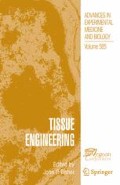25.1 Abstract
Demineralized bone matrix from horse has been reported to be osteoinductive. However, its performance was inferior to autogenous bone graft in terms of new bone formation. In the present experiment, an equine bone protein extract-COLLOSS E was investigated for its osteoinductivity in a rat model. At the mean time, carboxymethylcellulose (CMC) was tested as a potential carrier for the protein extract.
18 male Wistar rats (8 weeks) were employed in the experiment. Each rat was implanted randomly with the 2 of the following implants, one on each side of the abdominal muscle. 1) COLLOSS E lyophilisate. 2) PEEK ring holder. 3) 3% or 10% CMC. in gel or lyophilized form 4) COLLOSS E lyophilisate with 3% CMC, implanted as gel or in lyophilized form. 5) COLLOSS E suspension with 10% CMC, implanted as gel or in lyophilized form. The rats were followed up for 21 days. After termination, samples were subjected to macroscopic examination, plain radiograph, micro-CT and histological evaluations.
The results showed that PEEK ring or CMC alone could not induce ectopic bone formation. COLLOSS E lyophilisate has a slightly higher (6 out of 7) positive bone formation rate over COLLOSS E/3% CMC (3 out of 5, both gel and lyophilized form), however, the difference is non-significant (p=0.36, Fisher’s exact test). 10% CMC with COLLOSS E did not show ectopic bone formation when implanted as gel form (0/8), while 1 positive bone formation was found when implanted as the lyophilized form (1/4). Bone tissue volume ranged from 0 mm3 to 23.1mm3 for COLLOSS-E lyophilisate alone and 0 to 29.7mm3 for COLLOSS E/3%CMC (gel or lyophilized form). We concluded that equine bone protein extract has the ability to induce ectopic bone formation in the rat model. CMC could be a potential carrier, however, further studies are needed to verify the proportion and efficacy.
Access this chapter
Tax calculation will be finalised at checkout
Purchases are for personal use only
Preview
Unable to display preview. Download preview PDF.
25.7. References
S.D. Boden. Ne-Osteo Bone Growth Factor for Posterolateral Lumbar Spine Fusion: Results From a Nonhuman Primate Study and a Prospective Human Clinical Pilot Study. Spine 29[5], 504–514.(2004).
H. Li, X. Zou, C. Woo, M. Ding, M. Lind, and C. Bunger, Experimental anterior lumbar interbody fusion with an osteoinductive bovine bone collagen extract, Spine 30:890 (2005).
T.B. Vail, G.W. Trotter, and B.E. Powers, Equine demineralized bone matrix: relationship between particle size and osteoinduction, Vet.Surg. 23:386 (1994).
B.E. Buck, T.I. Malinin, and M.D. Brown, Bone transplantation and human immunodeficiency virus. An estimate of risk of acquired immunodeficiency syndrome (AIDS), Clin.Orthop.129 (1989).
T.A. Einhorn, J.M. Lane, A.H. Burstein, C.R. Kopman, and V.J. Vigorita, The healing of segmental bone defects induced by demineralized bone matrix. A radiographic and biomechanical study, J Bone Joint Surg Am. 66:274 (1984).
R. Gepstein, R.E. Weiss, and T. Hallel, Bridging large defects in bone by demineralized bone matrix in the form of a powder. A radiographic, histological, and radioisotope-uptake study in rats, J Bone Joint Surg Am. 69:984 (1987).
J.L. Russell and J.E. Block, Clinical utility of demineralized bone matrix for osseous defects, arthrodesis, and reconstruction: impact of processing techniques and study methodology, Orthopedics 22:524 (1999).
P. Ragni and T.S. Lindholm, Interaction of allogeneic demineralized bone matrix and porous hydroxyapatite bioceramics in lumbar interbody fusion in rabbits, Clin.Orthop.292 (1991).
C.E. Kawcak, G.W. Trotter, B.E. Powers, R.D. Park, and A.S. Turner, Comparison of bone healing by demineralized bone matrix and autogenous cancellous bone in horses, Vet.Surg. 29:218 (2000).
J. Wiltfang, F.R. Kloss, P. Kessler, E. Nkenke, S. Schultze-Mosgau, R. Zimmermann, and K.A. Schlegel, Effects of platelet-rich plasma on bone healing in combination with autogenous bone and bone substitutes in critical-size defects. An animal experiment, Clin.Oral Implants.Res. 15:187 (2004).
K.A. Schlegel, K. Donath, S. Rupprecht, S. Falk, R. Zimmermann, E. Felszeghy, and J. Wiltfang, De novo bone formation using bovine collagen and platelet-rich plasma, Biomaterials 25:5387 (2004).
M. Mizuno, R. Fujisawa, and Y. Kuboki, Type I collagen-induced osteoblastic differentiation of bone-marrow cells mediated by collagen-alpha2beta1 integrin interaction, J.Cell Physiol 184:207 (2000).
Mundy GR. Osteoblasts, bone formation and mineralization. In: Fogelman I, editor. Bone remodeling and its disorders. London: Maetin Dunitz; 1995. p 17–38.
A. Santa-Comba, A. Pereira, R. Lemos, D. Santos, J. Amarante, M. Pinto, P. Tavares, and F. Bahia, Evaluation of carboxymethylcellulose, hydroxypropylmethylcellulose, and aluminum hydroxide as potential carriers for rhBMP-2, J.Biomed.Mater.Res. 55:396 (2001).
H. Wang, I.N. Springer, H. Schildberg, Y. Acil, K. Ludwig, D.R. Rueger, and H. Terheyden, Carboxymethylcellulose-stabilized collagenous rhOP-1 device-a novel carrier biomaterial for the repair of mandibular continuity defects, J.Biomed.Mater.Res.A 68:219 (2004).
J.B. Rodgers, H.C. Vasconez, M.D. Wells, P.P. DeLuca, M.C. Faugere, B.F. Fink, and D. Hamilton, Two lyophilized polymer matrix recombinant human bone morphogenetic protein-2 carriers in rabbit calvarial defects, J.Craniofac.Surg. 9:147 (1998).
F. Trautinger, E.M. Kokoschka, and E.J. Menzel, Antibody formation against human collagen and C1q in response to a bovine collagen implant, Arch.Dermatol.Res. 283:395 (1991).
Author information
Authors and Affiliations
Editor information
Editors and Affiliations
Rights and permissions
Copyright information
© 2006 Springer Science+Business Media, LLC
About this paper
Cite this paper
Li, H., Springer, M., Zou, X., Briest, A., Bünger, C. (2006). Ectopic Bone Induction by Equine Bone Protein Extract. In: Fisher, J.P. (eds) Tissue Engineering. Advances in Experimental Medicine and Biology, vol 585. Springer, Boston, MA. https://doi.org/10.1007/978-0-387-34133-0_25
Download citation
DOI: https://doi.org/10.1007/978-0-387-34133-0_25
Publisher Name: Springer, Boston, MA
Print ISBN: 978-0-387-32664-1
Online ISBN: 978-0-387-34133-0
eBook Packages: EngineeringEngineering (R0)

